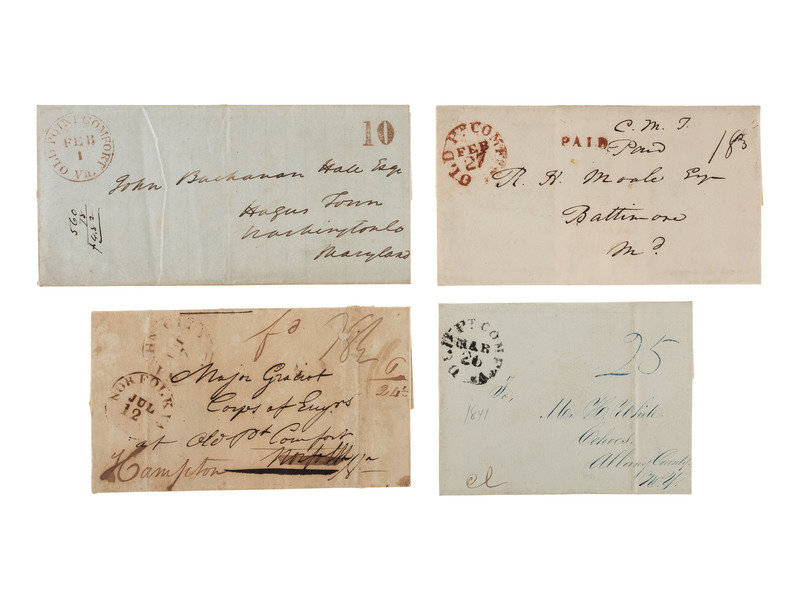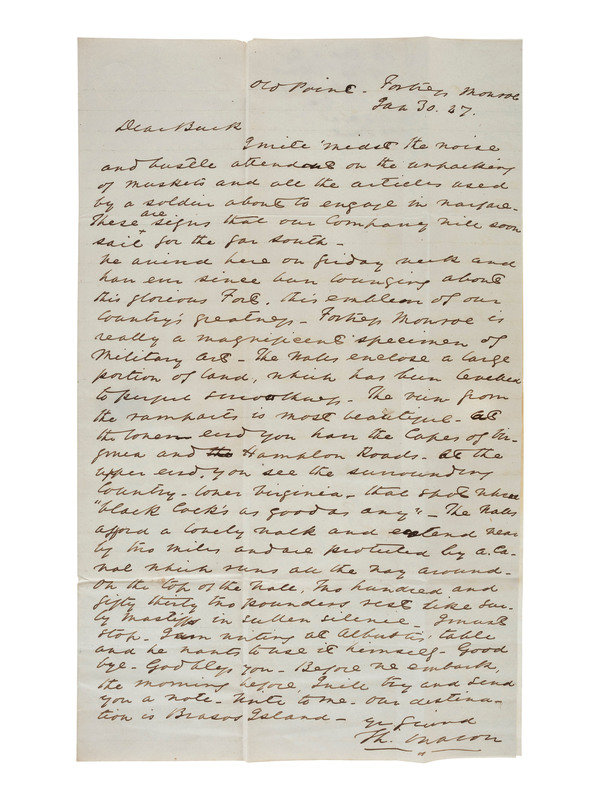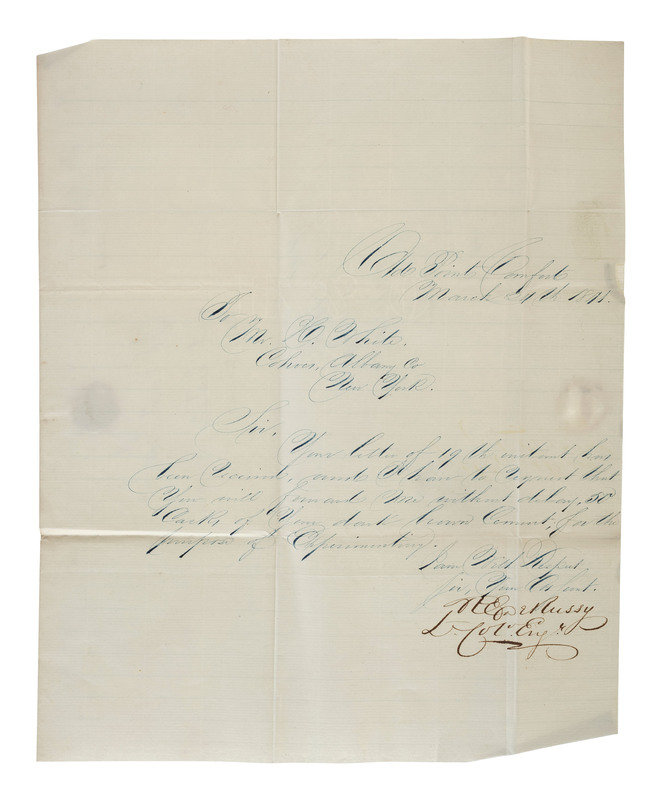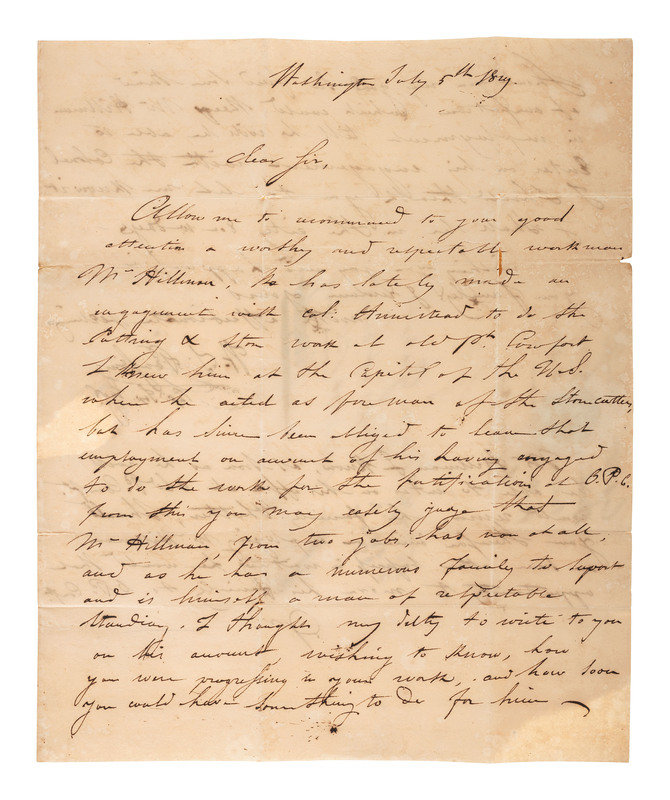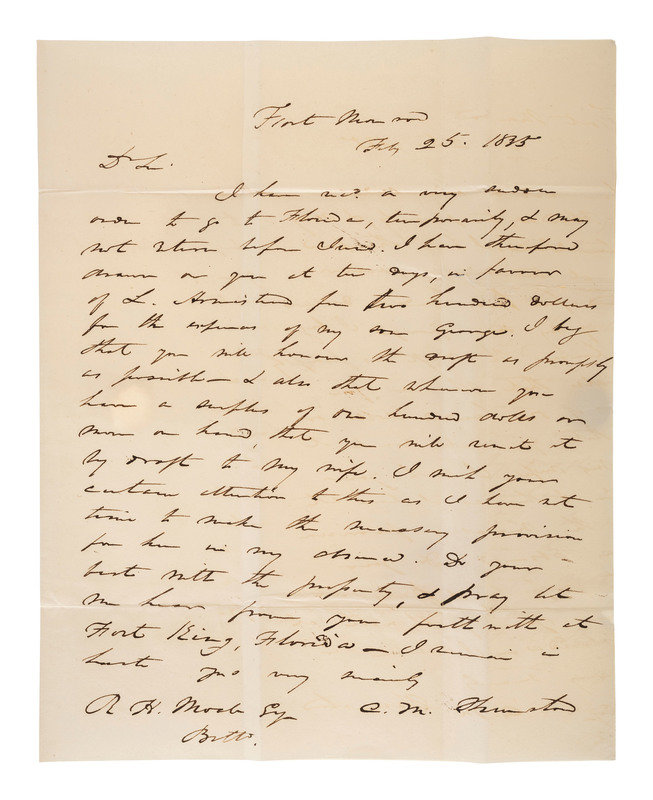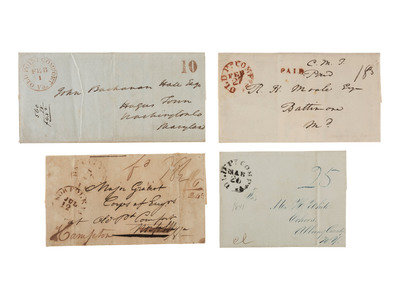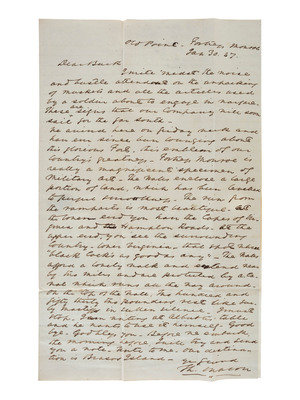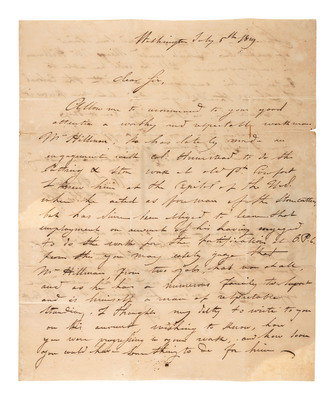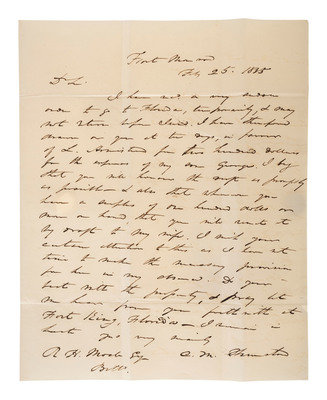Lot 61
[VIRGINIA] -- [FORT MONROE]. A group of 4 stampless covers related to Fort Monroe, including its early construction.
Sale 1069 - American Historical Ephemera & Photography
Lots Open
Aug 19, 2022
Lots Close
Aug 30, 2022
Timed Online / Cincinnati
Own a similar item?
Estimate
$200 -
300
Price Realized
$156
Sold prices are inclusive of Buyer’s Premium
Lot Description
[VIRGINIA] -- [FORT MONROE]. A group of 4 stampless covers related to Fort Monroe, including its early construction.
Letter from Captain William T. Poussin, Captain Topographical Engineers, to Major Charles Gratiot, Corps of Engineers, Old Point Comfort, Virginia. Washington, 5 July 1818. Poussin writes to Gratiot who was superintending the construction of Fortress Monroe at Old Point Comfort and recommends that he employ Mr. Hillman, "a worthy and respectable workman," as a stonecutter. "I knew him at the Capitol of the US when he acted as foreman of the stonecutters." (Hillman was employed during reconstruction of the Capitol after it was burned by the British in 1814.) With a 12 July [1819] handstamp from Norfolk, Virginia. The construction of Fortress Monroe was started in 1819 and was largely completed by 1834.
Letter from soldier "C.M. Thornton" at Fort Monroe to "R.H. Moale, Esq." of Baltimore, 25 February 1835. Thornton's letter heading identifies the post's name change from Fortress Monroe to Fort Monroe, and references his sudden departure for the Seminole War. With a 27 February [1835] Old Pt. Comfort handstamp.
Letter dated 24 March 1841 from Lt. Col. of Engineers, R.E. De Russy (Rene Edward De Russy), asking Mr. H. White of Albany, New York, to "forward me without delay 50 casks of your dark brown cement for the purpose of experimenting." De Russy was a West Point graduate and prominent engineer who was responsible for constructing many military fortifications and later was promoted to Brigadier General during the Civil War.
Letter from soldier Thomas Macon stationed at "Old Point - Fortress Monroe," 30 January 1847, and seemingly heading for the Mexican-American War. Macon writes to a family friend "midst the noise and bustle attendant to the unpacking of muskets and all the articles used by a soldier about to engage in warfare. There are signs that our company will soon sail for the South." Macon continues to describe the fort in glowing terms, describing it as "this glorious Fort, this emblem of our country's greatness. Fortress Monroe is really a magnificent specimen of military art...."
Property of a Midwest Collector
Condition Report
Contact Information
